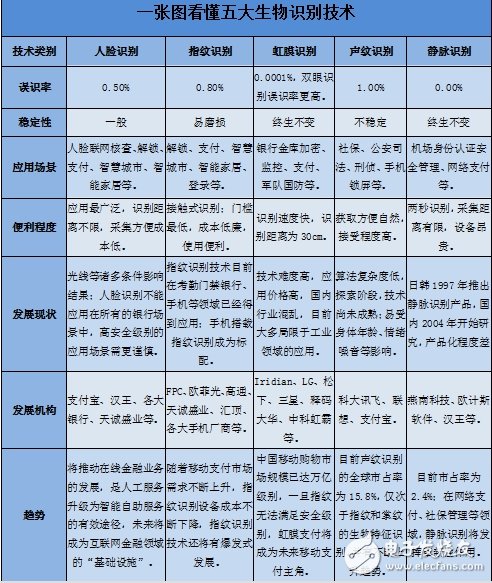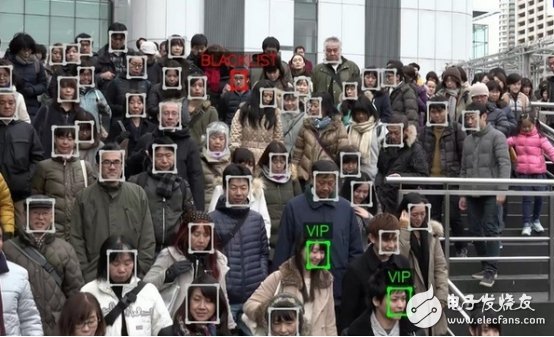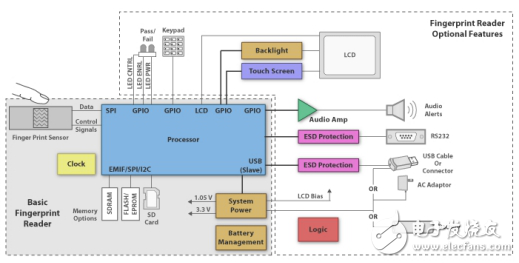The so-called biometric technology is the combination of computer and optical, acoustic, biosensor and biostatistical principles, using the inherent physiological characteristics of the human body (such as fingerprints, faces, irises, etc.) and behavioral features (such as handwriting). , voice, gait, etc.) to identify individuals. Many biometric recognition technologies have emerged, such as fingerprint recognition, palm geometry recognition, iris recognition, retina recognition, facial recognition, signature recognition, and voice recognition. However, some of the high-tech biometric identification methods are still in the experimental stage. We believe that with the rapid advancement of science and technology, more and more biometric technologies will be applied to real life. For example, each fingerprint has several unique measurable feature points, each feature point has about seven features, and one of the ten fingers produces a minimum of 4900 independently measurable features. The fingerprint recognition technology extracts the feature values ​​from the fingerprint by analyzing the feature points that can be measured by the fingerprint, and then performs authentication. At present, China's second-generation ID card has achieved fingerprint collection, and all major smartphones have realized fingerprint unlocking functions. Compared with other biometric technologies, fingerprint recognition has been widely used in consumer electronics, security and other industries. Through time and practice testing, technology is constantly innovating. Although each person's fingerprint recognition is unique, it does not apply to every industry and everyone. Compared with other biometric technologies, iris recognition misrecognition rate and rejection rate have reached the recognition level of zero probability, and iris recognition is non-contact recognition, which is convenient and efficient. However, the application price of iris recognition is also proportional to its technical difficulty, which is slightly more expensive than other recognition technologies. Although face recognition is currently not technically problematic, the problems that need to be solved are not as easy as those shown in some movies. For example, in data collection, there are not only key technologies such as image or video capture, lens tracking, anti-shake, and more effective pixels. In the processing of images and videos, video image detection technology, human body dynamic recognition technology, image wireless communication transmission technology, and the like are also applied. Among them, faced with the transmission of a large amount of data to the server for identification, there will be a lot of communication costs, and some are quite time consuming. This obviously makes the actual application based on face recognition not easy. However, in order to solve this problem, the company has now launched a webcam capable of integrating artificial intelligence technology and supplemented by edge computing to solve the above problems. Liu Xuehui, senior manager of Qualcomm's product market, said that iris technology has not been pushed up in the mobile phone industry. Through communication with mobile phone manufacturers, he believes that the first reason is the difficulty of ID design, the appearance is difficult, the second reason is cost, and one is experience. Because it requires people to face the face when they use it, it will have some influence under strong light. Inspired by bats, Qualcomm Snapdragon Sense ID 3D fingerprint technology can read fingerprint information via ultrasound technology, which means that no matter where your finger is placed on the phone, the technology can pass through the glass display, metal Or a plastic case to "perceive" your fingerprint. Device manufacturers do not need to consider the location of the fingerprint reader on a tablet or mobile phone, which will result in a more compact device. Even if there is sweat or other liquid on the user's finger, the ultrasound in the Snapdragon Sense ID can detect the user's fingerprint, which is stronger than Apple's Touch ID fingerprinting technology. Current fingerprint technology uses sensors for fingerprint scanning, but Qualcomm ultrasound technology recognizes fingerprint information even when the finger is "contaminated." It is expected that smartphones equipped with Qualcomm ultrasonic fingerprinting technology will be available in the second half of this year. VSF6170 Slim Slide fingerprint sensor, which enables smartphone manufacturers to integrate thin and light fingerprint sensors into tablets or mobile phones. This small sensor can be placed on the power button, volume button, or phone frame. According to SynapTIcs, this ultra-wave design sensor is only 2.8 mm thick. This is also the case, the SynapTIcs sensor requires the user to slide the finger, unlike the Touch ID on the iPhone 6 and the push-type fingerprinting technology that appears on the Galaxy S6. In addition, placing the fingerprint scanner on the phone's bezel allows the user to unlock the phone more easily: the user can hold the phone with one hand and only need to swipe his finger to unlock the phone. Fujitsu's iris scanning technology allows users to use their eyes to unlock their smartphones. The company claims that with the infrared scanner, the biometric system only requires smartphone users to stare at the phone display to unlock the phone. Compared to fingerprint recognition, iris scan recognition is more reliable in protecting user sensitive data. When a person enters the age of 2, his iris does not change much, the surface of the eye is hard to be hurt, and it is difficult to be copied, and the error rate of this technology is very low, only one in 100,000. The need for real-time signal processing in biometric fingerprint scanning makes the C55x DSP an attractive solution for this application. The C55x's low-power features in active and passive modes make it a perfect match for fingerprint scanning applications, because for most of the time, the processor is in low-power mode. Peripheral integration of the C55x DSP includes an on-chip LDO, on-chip memory, and USB Phy for connectivity. Installing on-chip peripherals reduces total system cost by simplifying board layout and reducing the total number of chips. The LCD bridge found on the C55x can be used to display messages or option menus. The integration of the TSC2003 touch screen controller with the application provides the user with a way to select options from the displayed menu. The app also has built-in audio capabilities that provide feedback to users in both alert and pre-recorded voice commands. In addition, many manufacturers have introduced corresponding biometric solutions. With the development of the times and the continuous advancement of technology, biometrics will also usher in new changes and demands, and the intersection with the Internet and the Internet of Things will become the focus of various industries. The future identification technology will be diversified and developed, and it will be worthy of attention. Live Pro Speaker,8 Woofer Speaker,8 Inch Woofer Speaker,Woofer Speaker 8 Inch Guangzhou Yuehang Audio Technology Co., Ltd , https://www.yhspeakers.com


